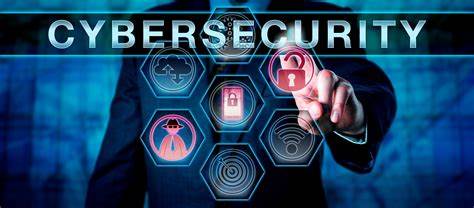Cybersecurity Solutions for Businessesv – In today’s hyperconnected world, businesses of all sizes face increasing cybersecurity threats. From ransomware attacks to data breaches, cybercriminals are becoming more sophisticated, making it essential for businesses to prioritize cybersecurity. Effective cybersecurity solutions for businesses can protect sensitive data, secure networks, and ensure business continuity. This article will explore the latest cybersecurity solutions that organizations should adopt and how they can help mitigate risks.
Table of Contents
ToggleUnderstanding the Importance of Cybersecurity for Businesses
The digital transformation has made businesses more efficient but also more vulnerable to cyberattacks. Companies collect and store vast amounts of sensitive data, including financial information, customer details, and intellectual property. A single cyberattack can result in significant financial losses, reputational damage, and legal liabilities.
According to cybersecurity reports, cybercrime is expected to cost the global economy over $10 trillion annually by 2025. As cyber threats evolve, businesses need to stay one step ahead by implementing robust cybersecurity solutions.
types of Cybersecurity Threats Businesses Face
Before diving into solutions, it’s essential to understand the most common types of cyber threats:
- Phishing: Cybercriminals send deceptive emails to trick employees into revealing sensitive information, such as passwords or financial details.
- Ransomware: This type of malware encrypts a company’s data, and attackers demand a ransom to restore access.
- Distributed Denial of Service (DDoS) Attacks: These attacks overwhelm a business’s website or servers, causing downtime and disrupting operations.
- Insider Threats: Employees or contractors with access to sensitive data intentionally or unintentionally cause security breaches.
- Zero-Day Exploits: These are attacks that take advantage of software vulnerabilities that are unknown to the vendor or user.
Common Cybersecurity Threats for Businesses
| Threat Type | Description | Potential Impact |
|---|---|---|
| Phishing | Fraudulent emails used to steal information | Data theft, financial loss |
| Ransomware | Malware that locks data and demands ransom | Data loss, operational downtime, ransom costs |
| DDoS Attacks | Flooding servers or networks with traffic | Website crashes, disrupted business services |
| Insider Threats | Security breaches from within the organization | Data loss, security compromise |
| Zero-Day Exploits | Exploiting unknown vulnerabilities | Software/system damage, data breach |
Key Cybersecurity Solutions for Businesses
Businesses need a multi-layered approach to cybersecurity that addresses various risks. Below are some essential cybersecurity solutions that can help protect your business.
1 Firewalls
Firewalls are the first line of defense for any business. They monitor incoming and outgoing network traffic and block unauthorized access. Firewalls can be hardware-based or software-based, and many organizations use both to secure their networks.
- Next-Generation Firewalls (NGFWs): NGFWs go beyond traditional firewalls by incorporating features like deep packet inspection, intrusion prevention systems (IPS), and application awareness.
| Solution | Description | Benefit |
|---|---|---|
| Next-Generation Firewalls (NGFWs) | Monitors traffic and blocks threats | Enhanced security and threat detection |
2 Antivirus and Anti-Malware Software
Antivirus software helps protect your business from various forms of malware, including viruses, spyware, and ransomware. Modern anti-malware solutions offer real-time scanning and automatic updates to detect and remove the latest threats.
- Cloud-Based Antivirus: Many businesses are now adopting cloud-based antivirus solutions that can provide centralized control, real-time updates, and stronger protection across all devices.
| Solution | Description | Benefit |
|---|---|---|
| Cloud-Based Antivirus | Protects from malware with cloud-based scanning | Real-time protection, easy management |
3 Encryption Tools
Data encryption is essential for protecting sensitive information, especially when data is being transferred or stored. Encryption tools ensure that even if a cybercriminal intercepts data, they cannot read it without the encryption key.
- End-to-End Encryption: This ensures that only the sender and recipient can access the information, protecting data throughout its transmission.
| Solution | Description | Benefit |
|---|---|---|
| End-to-End Encryption | Encrypts data from sender to recipient | Protects sensitive data during transmission |
4 Virtual Private Networks (VPNs)
A VPN allows employees to securely access the company’s network from remote locations. It encrypts the data transmitted between the employee’s device and the business’s network, preventing cybercriminals from intercepting sensitive information.
- Remote Access VPNs: With the rise of remote work, businesses need to implement VPNs to ensure secure access to internal networks for employees working from home or traveling.
| Solution | Description | Benefit |
|---|---|---|
| Remote Access VPN | Encrypts data for remote workers | Secures remote access, prevents data interception |
5 Multi-Factor Authentication (MFA)
Multi-Factor Authentication (MFA) adds an extra layer of security by requiring users to verify their identity in multiple ways, such as through a password and a mobile device. This greatly reduces the chances of unauthorized access, even if passwords are compromised.
- Biometric Authentication: Some MFA solutions include fingerprint or facial recognition, adding another level of security.
| Solution | Description | Benefit |
|---|---|---|
| Multi-Factor Authentication (MFA) | Requires additional identity verification steps | Reduces unauthorized access |
6 Employee Training and Awareness Programs
Human error is one of the leading causes of cybersecurity breaches. Regular employee training and awareness programs can teach staff how to recognize phishing emails, avoid unsafe websites, and use secure passwords.
- Phishing Simulations: Companies can use phishing simulations to test employees’ ability to recognize suspicious emails, helping to prevent future attacks.
| Solution | Description | Benefit |
|---|---|---|
| Employee Training and Phishing Simulations | Educates staff on cyber threats | Reduces human error-related breaches |
7 Backup and Disaster Recovery Solutions
Backup solutions are essential for protecting your data in case of a cyberattack or hardware failure. Disaster recovery plans help businesses quickly recover from attacks like ransomware without paying a ransom.
- Cloud Backups: Cloud-based backup solutions provide an additional layer of security by storing copies of your data offsite, making it easier to recover after a cyberattack.
| Solution | Description | Benefit |
|---|---|---|
| Cloud Backups | Stores backup data in the cloud | Quick recovery after data loss or ransomware attack |
Advanced Cybersecurity Solutions for Large Enterprises
Large businesses with extensive networks and sensitive data may require more advanced cybersecurity solutions to defend against sophisticated attacks.
1 Artificial Intelligence and Machine Learning for Threat Detection
AI and machine learning are becoming vital tools in cybersecurity. These technologies can analyze network traffic patterns and detect anomalies that may indicate a cyberattack. By continuously learning from new threats, AI-based solutions can proactively block emerging risks.
- Behavioral Analytics: AI systems analyze user behavior to detect unusual patterns, which can be an indicator of a cyber threat.
| Solution | Description | Benefit |
|---|---|---|
| AI-Based Threat Detection | Uses AI to identify and stop emerging threats | Proactive threat detection, faster response |
2 Security Information and Event Management (SIEM) Systems
SIEM systems collect data from across a company’s IT environment and analyze it to detect potential security threats. These systems provide real-time monitoring and alerts, helping businesses respond to incidents quickly.
- Automated Response Systems: Some SIEM systems come with automated response capabilities, immediately isolating and neutralizing threats before they cause damage.
| Solution | Description | Benefit |
|---|---|---|
| SIEM Systems | Centralized data collection and threat analysis | Real-time threat monitoring and rapid response |
Compliance and Regulatory Cybersecurity Requirements
Many industries, such as finance and healthcare, are subject to stringent data protection laws. Ensuring compliance with regulations like GDPR, HIPAA, and PCI-DSS is critical for avoiding hefty fines and maintaining customer trust.
| Regulation | Industry | Cybersecurity Requirement |
|---|---|---|
| GDPR | All industries operating in the EU | Data protection and breach reporting |
| HIPAA | Healthcare | Protecting patient data (PHI) |
| PCI-DSS | Finance | Secure processing of payment card information |
Conclusion
In 2024, cybersecurity is more important than ever for businesses of all sizes. Implementing the right cybersecurity solutions can help mitigate risks, protect sensitive data, and ensure business continuity. From basic defenses like firewalls and antivirus software to advanced solutions like AI-driven threat detection and SIEM systems, businesses must adopt a multi-layered approach to safeguard their operations. Additionally, employee awareness and compliance with industry regulations play crucial roles in maintaining a robust cybersecurity posture.
By staying proactive and continuously updating their defenses, businesses can minimize the risk of falling victim to cyberattacks in an increasingly digital world.




